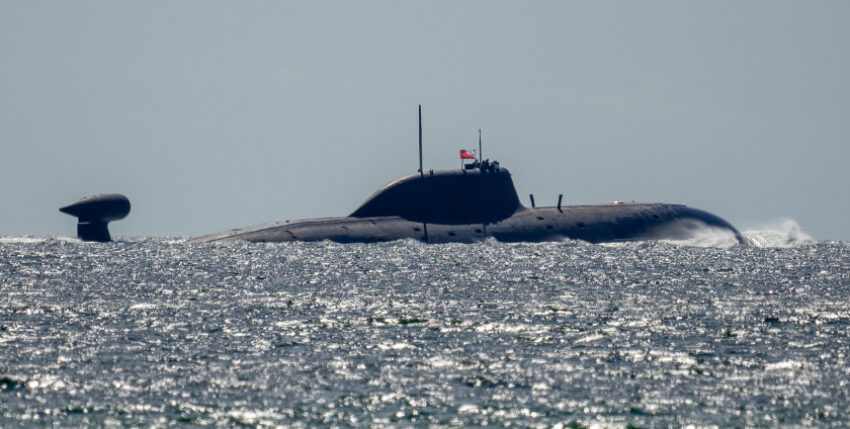Russia's President Putin is also striking an aggressive maritime tone.
Does the strength of its fleet justify this behaviour?
At this year's Fleet Day, Vladimir Putin presented a new Russian naval doctrine. It is attracting attention less because of its content than because of the aggressiveness of its announcement. The new doctrine is derived from the threat posed by the West, in particular the USA and its navy, and thus fits into the long-term Russian narrative of external threat and encirclement. Following a familiar pattern, this is intended to justify further Russian offensives as pre-emptive counter-attacks.
In fact, the new doctrine is designed to deal realistically with the country's own strengths and weaknesses. In addition to the geographical location of Russian bases, the weaknesses include the country's limited capabilities in warship construction. Whether it succeeds in acquiring additional bases in other regions of the world will depend, among other things, on Russia's future economic ability to find contractors.
As the core of the old Soviet shipyard industry is located in Ukraine, programmes to build large ships are not realistic. At best, Russia has been building corvettes for years. The construction of further Admiral Grigorovich-class frigates has been put on hold because Ukraine has not supplied any turbines and Germany has not supplied any engines since the annexation of Crimea. France did not hand over the two helicopter carriers it had ordered for the same reason, and there is no more talk of such plans. So when Putin talks about aircraft carriers without naming a year, this is not concrete planning, but balm for the wounded Russian naval soul on its day of honour.
Only the submarines are occasionally spectacular new builds, but these are one-off ships or prototypes with no proven operational value. This does not rule out the possibility that they can provide good service for certain special tasks, such as the deployment against underwater cables. The Russian Navy lacks the potential for larger blue water operations, and after the end of the war in Ukraine, the land forces are likely to take priority in terms of resources when it comes to restoring their operational capability.
Missiles have been one of Russia's strengths since the Soviet era. The supersonic Kalibr missile can be fired in various versions against land, sea and underwater targets. It can be found in large numbers on various platforms, especially corvettes, and was deployed in both Syria and Ukraine. The new Zirkon hypersonic weapon expands this potential even further.
While the Russian navy only has very limited options in the open oceans, it is a very serious opponent in the extended coastal area. With its missiles, it can severely disrupt and possibly even prevent supplies and reinforcements for the Baltic states. It can also attack targets far into the hinterland of western states. This missile threat, not only from the sea, deserves the attention of Western defence planners when it comes to defending themselves against Russian military aggression and blackmail. This has consequences for Western navies, both in terms of self-defence and the ability to engage the launch platforms.
Putin's speech and the new naval doctrine may sound aggressive, but they are an admission that the USA, not Russia, is the master of the oceans. Thus, in the Soviet-Russian tradition, the only option left is a strategic defence, supplemented by offensive operational options. We, Germany and its allies, are confronted with these in the entire northern flank area and especially in the Baltic Sea and will have to find new answers.
Karsten Schneider










